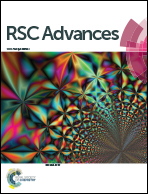[60]Fullerenyl amino acids and peptides: a review of their synthesis and applications
Abstract
This review reports on the latest progress in the synthesis of fullerenyl amino acids and related derivatives, and categorises the molecules into functional types for different uses: these include directly attached fullerenyl amino acids, fullerenyl N- and C-capping amino acids, and those amino acids in which the [60]fullerene group is attached to the amino acid side chain. These first and last mentioned derivatives have the potential to be incorporated into non-terminal positions of peptides. The applications of these substrates, by integration into different biological and materials chemistry programs, are also highlighted.
![Graphical abstract: [60]Fullerenyl amino acids and peptides: a review of their synthesis and applications](/en/Image/Get?imageInfo.ImageType=GA&imageInfo.ImageIdentifier.ManuscriptID=C4RA07310J&imageInfo.ImageIdentifier.Year=2014)

 Please wait while we load your content...
Please wait while we load your content...